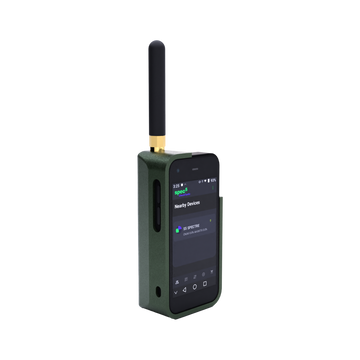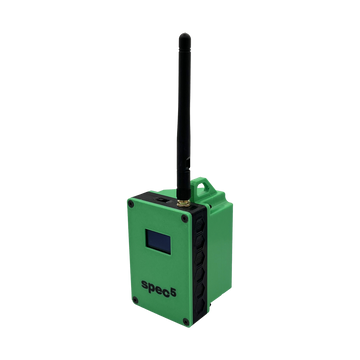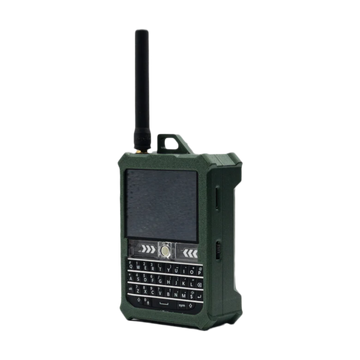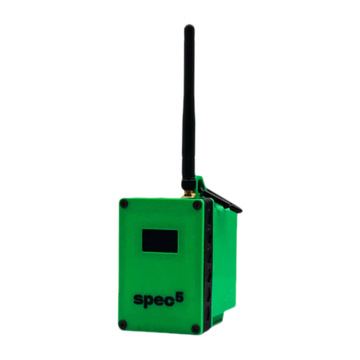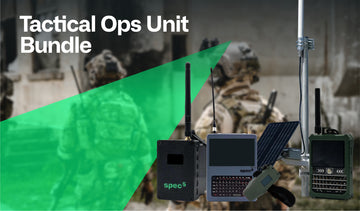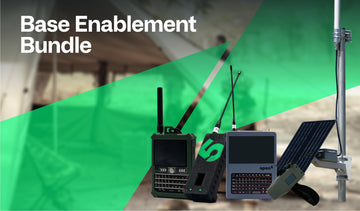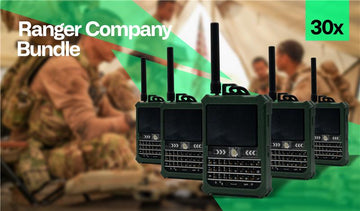"Meshtastic relays are more than just communication tools—they’re lifelines in survival situations."
When you're out in the wilderness or stuck in an emergency situation, the first thing you’ll realize is how important communication is. If something goes wrong—whether you're lost in the woods, caught in a natural disaster, or just need to alert someone about an urgent situation—being able to reach out for help or stay in touch with your group could be a lifesaver. Unfortunately, traditional forms of communication like cell phones and radios often fail when you’re too far from civilization or when a disaster disrupts communication infrastructure. In these moments, having a reliable way to stay connected is not just helpful, but essential.
Meshtastic relays offer an advanced, reliable solution for ensuring uninterrupted communication when conventional systems fail. By utilizing LoRa (Long Range) radio technology, Meshtastic enables users to create a robust mesh network that operates independently of traditional infrastructure. The relays act as intermediaries, facilitating communication over extended distances, even in the most remote and challenging environments. Whether you’re traversing rugged landscapes or responding to an emergency, Meshtastic relays ensure that vital information can be shared and groups can remain connected, regardless of distance or terrain.
What is Meshtastic?
Meshtastic is an innovative communication system designed to leverage LoRa (Long Range) radio technology, facilitating the creation of a decentralized mesh network. Unlike traditional communication methods, Meshtastic does not rely on central infrastructure such as cell towers or satellites. Instead, it enables devices to communicate with each other directly or through relay points, effectively expanding coverage in areas where conventional communication networks are unavailable or unreliable.
This decentralized structure allows Meshtastic to excel in scenarios where traditional networks would fail—particularly in remote outdoor expeditions, survival situations, or disaster recovery efforts where infrastructure is compromised.
What are Meshtastic Relays?
A Meshtastic relay serves as a communication intermediary, relaying messages between devices within the network. By receiving messages from one device and transmitting them to another, relays extend the effective communication range of the mesh network. Strategically placed relays ensure that communication remains intact across long distances, even in difficult or obstructed terrains such as forests, mountains, or valleys.
In survival scenarios, Meshtastic relays become indispensable for maintaining communication, allowing you to stay connected with team members, share critical information, and coordinate actions over considerable distances.
How Meshtastic Relays Work?
Meshtastic’s mesh networking protocol operates through a decentralized, peer-to-peer system. Each device or node in the network can function as a relay, forwarding messages to other devices until they reach their destination. This absence of central infrastructure means that the network remains operational even if individual nodes are damaged or lose connection.
The relay system allows communication to span vast distances by creating a “chain” of devices, with each one acting as a communication point that forwards data along the path. This highly resilient network design ensures that Meshtastic can function effectively in remote and disaster-stricken environments, where traditional communication systems are most likely to fail.
Why Use Meshtastic Relays in Survival Scenarios?
Extended Range and Coverage
In survival situations, you may be in areas where traditional communication methods like cell phones are unreliable or entirely unavailable. Meshtastic relays are perfect for extending the range of your communication network. By strategically placing relays along your route or in specific locations (such as high ground or areas with fewer obstructions), you can drastically increase the coverage area.
For instance, when hiking or camping in the wilderness, your radio range is often limited by natural obstacles such as mountains or thick forests. Meshtastic relays help you circumvent these limitations, ensuring that communication remains intact across longer distances.
Low Power Consumption
One of the main challenges in survival scenarios is conserving battery life. Many traditional communication devices consume significant power, which can drain quickly in the absence of charging opportunities. Meshtastic devices, on the other hand, are designed with low-power consumption in mind, enabling devices to run for extended periods on small batteries.
By using relays, you can distribute the communication load, reducing the need for each device to transmit over long distances. This not only conserves battery life but also makes your entire network more sustainable over time.
Decentralized and Robust Network
Meshtastic’s mesh network is entirely decentralized, meaning there is no central server or vulnerable infrastructure. In a survival scenario, you don’t have to worry about relying on cellular towers or satellite systems, both of which can fail during natural disasters or in remote locations. As long as you have a network of Meshtastic relays, your communication system remains operational, even in the most adverse conditions.
The robustness of a mesh network is also a key advantage: if one node fails or loses connection, the remaining nodes continue to function, passing messages along alternate paths. This ensures a higher degree of resilience in your communication network.
Real-Time Location Sharing
Communication in survival situations isn't just about talking; it’s also about knowing the whereabouts of your team members. Meshtastic allows you to share your real-time GPS coordinates with other members of the network. This is invaluable in scenarios like search and rescue, where keeping track of everyone’s location is critical.
By using Meshtastic relays, you can ensure that your team remains informed about each other's positions, even if you're spread out across a large area. This could make all the difference in navigating back to base, coordinating a rescue, or avoiding dangerous areas.
5. Easy-to-Set-Up and Maintain
Setting up a Meshtastic relay network is relatively straightforward. Devices come with user-friendly apps and interfaces, making it easy for anyone to get started with the system. Once the devices are in place, maintenance is minimal, and the system requires little intervention to keep running.
In a survival scenario, when resources are limited, the simplicity of Meshtastic makes it an ideal solution. You don’t need specialized technical knowledge to set up the network, and you can easily expand your coverage by adding more relays as needed.
How to Maximize Your Radio Coverage with Meshtastic Relays
Strategic Relay Placement
To optimize your radio coverage, it’s important to think strategically about where to place your relays. Here are some tips for effective relay placement:
- High Ground: Place relays on elevated terrain to maximize their line of sight and coverage area.
- Clear of Obstacles: Ensure relays are placed in locations with minimal obstructions, such as open fields or clearings. Dense forests or valleys can reduce signal strength.
- Near Planned Routes: Place relays along your planned route or in areas where you might encounter unexpected challenges, such as steep cliffs or large bodies of water.
- At Key Intervals: Place relays at intervals to ensure there are no gaps in the network.
Test and Monitor Your Network
Before heading into a survival scenario, it’s critical to test the network. Make sure that all relays are functioning correctly and that devices can communicate over the intended distances. It’s also a good idea to monitor your network’s performance regularly, especially if you're in an environment that could impact radio signal strength (like dense forests or mountainous regions).
Use Low-Power Modes When Possible
While Meshtastic devices are designed for efficiency, it’s still important to conserve power whenever possible. Use low-power transmission modes and set your devices to only transmit when necessary, such as when sending an emergency message or GPS location.
Expand the Network as Needed
If you find that your network coverage is not sufficient for your needs, you can always add more relays to extend the range. With Meshtastic’s flexibility, you can continue to expand the network as your group grows or as the area you’re covering increases.
Plan for Emergencies
In survival situations, emergencies can arise unexpectedly. Ensure that you have a backup plan in case your main network goes down or relays become compromised. This could involve bringing extra batteries, backup radios, or a set of pre-programmed messages for quick communication in case of urgent situations.
Conclusion
Meshtastic relays offer a revolutionary solution for maintaining reliable communication in survival scenarios, ensuring coverage in areas where traditional networks fail. These devices utilize a decentralized mesh network, making them highly resilient and capable of operating even in remote locations without relying on infrastructure like cell towers or satellites. With Meshtastic, users can enjoy extended range, low power consumption, and a robust, scalable communication system ideal for outdoor expeditions, emergencies, or survival situations.
For those seeking the ultimate in performance and reliability, Spec5 Meshtastic relay provide advanced features designed to optimize signal strength, durability, and network coverage. Whether you're navigating through rugged landscapes or preparing for the unexpected, specfive relays enhance the Meshtastic network, providing superior long-range communication in even the most extreme environments. By integrating specfive relays into your setup, you can maximize your network's efficiency and ensure that you stay connected, no matter the challenge.

